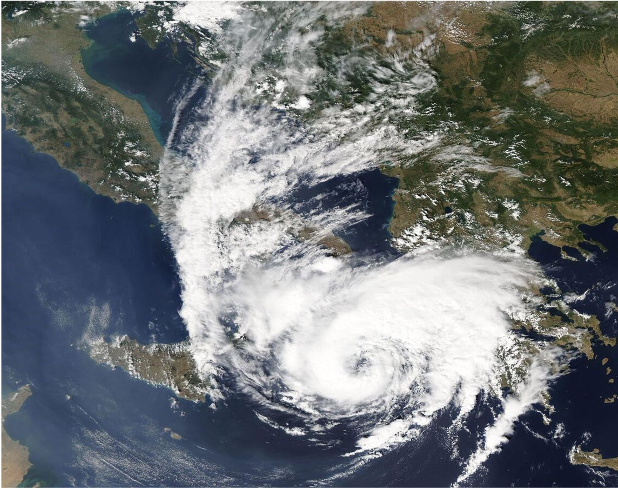the MEDICANES project
EARTH OBSERVATIONS AS A CORNERSTONE TO THE UNDERSTANDING AND PREDICTION OF TROPICAL-LIKE CYCLONE RISK IN THE MEDITERRANEAN

In the last decades, several Mediterranean cyclones have attained similar cloud structures, although with weaker intensities, to tropical cyclones. These systems compose a peculiar subcategory of Mediterranean cyclones, known in the scientific literature as medicanes (a portmanteau of the words Mediterranean hurricanes), or Mediterranean tropical-like cyclones. Despite their limited number to about 0-3 events per year, medicanes are directly related with high impact weather and thus have been constantly attracting the interest of the scientific community, but also of the general public.
They cause numerous fatalities and severe damages in several Mediterranean countries due to strong wind gusts, high sea waves and heavy rainfall. There is no doubt that medicanes constitute prominent environmental risks that affect more than 500 million people in one of the most densely populated regions of the world. In this project we will rely on Earth Observations (EO) to provide a comprehensive approach on the problem of increasing our understandying of medicanes, better forecasting their occurrence and quantifying the limitations of atmospheric modelling in reproducing relevant high-impact weather.
Objectives
Rely on advanced satellite EO systems and modelling capabilities to develop new concepts, methods and tools to:
